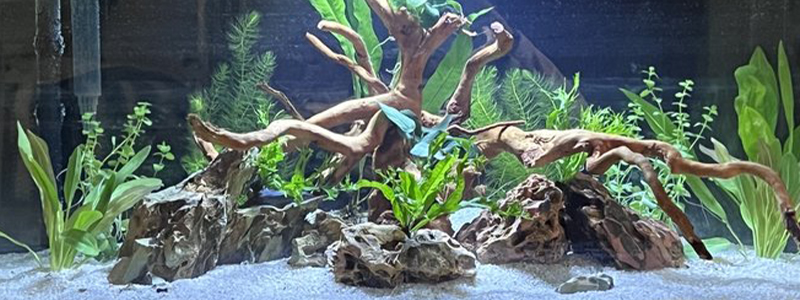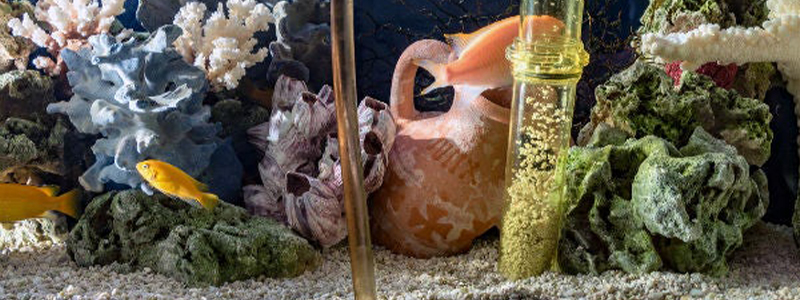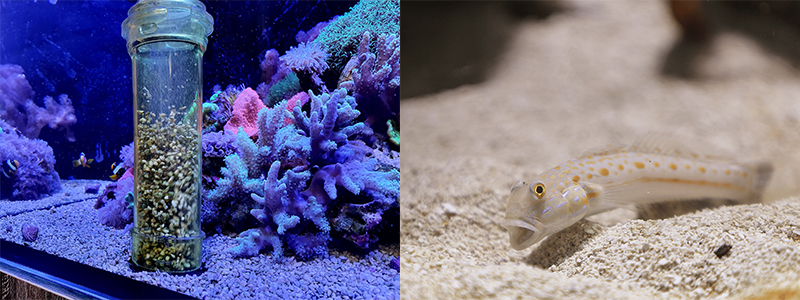For those who are struggling to choose between a 10 Gallon vs 20 Gallon tank, this guide is your right solution!
The 10-gallon allows for easy handling and is appropriate for both beginners and experienced fish enthusiasts, while the 20-gallon offers a wider variety of fish options. These are great tanks, perfect for bedrooms or living rooms with many advantages.
So, let’s have a look at our guide because this comparison can help you understand the basic differences between them along with their pros and cons so that you can make a wise choice!
Disclosure: This article contains affiliate links. When you follow a link to purchase the products, I sometime earn a commission, at no additional cost to you. Read my full disclosure here
10 vs 20 Gallon Tank: The Ultimate Comparison
Tank Dimensions
10 Gallon: The 10-gallon option is unique among fish tanks, and its size is the most obvious difference.
The dimensions of a standard 10-gallon tank are 20 inches long, 10 inches wide, and 12 inches high.
20 Gallon: The 20-gallon fish tank, on the other hand, provides more room for aquatic life. The 20-gallon tank comes in two standard sizes. One is twenty-four inches long, twelve inches wide, and sixteen inches tall. An alternative size measures thirty inches in length, twelve inches in width, and twenty inches in height.
Weight
10 Gallon: The 10-gallon tank weighs less in its packaging, but the actual weight might differ depending on the brand and thickness of the tank wall.
The weight of acrylic is roughly 10 lbs, and the weight of glass is 13–15 lbs for an empty 10-gallon tank.
20 Gallon: When you get to the 20-gallon tank, you should prepare for a little bit more weight because of its larger size. Depending on the brand and materials, the weight may change.
The empty weight of a 20-gallon acrylic tank is approximately 20 lbs, whereas a glass tank can weigh up to 30 lbs.
Because of its larger size, a 20-gallon tank can hold more water, which means more fish. It’s a better option if you intend to keep a large quantity of fish.
Furthermore, take into account the available space in your home in addition to size and weight. To make sure the aquarium and your living area fit comfortably, avoid trying to fit a 20-inch aquarium into a small space.
Tank Types
10 Gallon: The 10-gallon fish tank is available in a range of forms and styles to suit a variety of tastes. There exists a style that caters to individual preferences, be they more horizontal or vertical space. For fish species that prefer vertical habitats and smaller spaces, tall 10-gallon tanks are perfect.
These tanks are also available in a variety of forms, including rounded, hexagonal, and corner patterns. The kind of fish you wish to keep and your personal preferences will determine which 10-gallon fish tank is best for you.
20 Gallon: In addition to offering a wider variety of shapes and designs, the 20-gallon fish tank is twice as large as the 10-gallon tank. Twenty-gallon tanks come in both tall and long designs to accommodate varying needs for horizontal or vertical space.
Hexagonal, rounded, squared, rectangular, and even wide-corner aquariums are among the shapes available for 20-gallon tanks.
Space and Placement
10 Gallon: A 10-gallon tank is more practical than a larger aquarium, which requires careful consideration because of its weight and large surface area.
The 10-gallon tank’s smaller size makes it simpler to locate a good location within the home, like on a desk or countertop. But bear in mind that the tank weighs about 110 pounds when it is filled with water. As a result, it’s imperative to confirm that the surface you select can bear the weight of the tank.
20 Gallon: A 20-gallon fish tank is larger and necessitates more carefully planned interior layouts. This larger tank is better suited for being placed on a sturdy stand because it won’t fit comfortably on a desk or side table.
The weight and size of a 20-gallon aquarium, when filled with water, can reach up to 225 pounds, so the stand needs to be strengthened to support the tank. Furthermore, make sure the tank’s sides don’t come through the stand to avoid applying excessive pressure to the aquarium, which could cause leaks or shattering.
Maintenance
10 Gallon: Smaller aquariums, such as the 10-gallon fish tank, are easier to maintain but still need care because of their small size. Fish and invertebrates may be affected by waste and pollution from occupants more quickly in a more confined space than in larger tanks where the waste is more diluted. This implies that you’ll have to be careful to ensure adequate aeration, conduct water tests, and perform routine water changes.
Frequent freshwater changes are crucial for removing and diluting surplus fish waste that the filter may not be able to handle.
20-Gallon: Even though it is larger, the 20-gallon fish tank is still thought to be simple to maintain, so novices are advised to choose it. It achieves a balance by offering a significant water volume without unduly complicating cleaning.
If the tank is properly stocked, the maintenance for the 20-gallon tank is similar to that of the 10-gallon tank. The main distinction is that waste from fish and other inhabitants is not as concentrated. To keep an eye on and preserve the fish tank’s water quality, routine testing, and water changes are still essential.
Which Fishes You Can Keep in 10 Gallon Tank?
Because of its smaller size, a 10-gallon aquarium has fewer options when it comes to stocking it. The majority of fish need more room than a 10-gallon tank can offer. Bigger fish, such as cichlids and goldfish, should not be kept because they prefer larger spaces.
Choose small tropical fish like bettas and guppies for a 10-gallon tank. Invertebrates such as prawns and mystery snails make good choices as well. Adding live plants improves the aesthetics of the aquarium and helps maintain the water’s quality, which is advantageous for the creatures living in the tank as well as the tank itself.
Which Fishes You Can Keep in 20 Gallon Tank?
When it comes to stocking, the 20-gallon aquarium is more flexible than its smaller equivalent. Aquarium enthusiasts have more options because different fish species can thrive in the larger water volume.
A single baby fancy goldfish, tiny schooling fish like neon tetras, larger fish like dwarf gourami, and livebearers like molly and platyfish can all be kept in a 20-gallon tank. Its larger volume also makes it appropriate for prawns and snails, so you can stock more invertebrates for a more varied aquatic environment.
How Many Fish Per Gallon?
The straightforward one-inch-per-gallon rule aids in figuring out how many fish are appropriate for your aquarium. One inch of mature fish is recommended for every gallon of water. Ten one-inch fish, five two-inch fish, or a combination of two three-inch and one four-inch fish, for example, can all be kept in a ten-gallon tank.
The Pros and Cons of 10 Gallon vs 20 Gallon Tank
10 Gallon
| Pros | Cons |
| · economical option
|
· Few options for stocking
|
| ·Perfect for small areas
|
· Space reserved for plants and fish
|
| · There are numerous forms and styles to choose from.
|
· Not suitable for the majority of plants, fish, or invertebrates
|
| · ideal for nanofish
|
|
| · Lightweight
|
20 Gallon
| Pros | Cons |
| · accessible in various forms
|
· Requires a sturdy foundation to support the tank’s weight.
|
| · able to hold a greater number of fish
|
· difficult to navigate
|
| · Perfect for newbies
|
|
| · Simple to uphold
|
|
How to Upgrade from 10 Gallon to 20 Gallon Tank?
Step 1: Move your fish to a temporary container first.
Step 2: Place the newly purchased 20-gallon tank next to the already-existing 10-gallon tank, or relocate the latter after 50–75% of its water has been drained (no need to save it).
Step 3: With just an inch or so left in the old tank, transfer most of the remaining 10-gallon water into the new one.
Step 4: If you are recycling gravel, just add more for visual appeal and put it straight into the new tank. To seed the new substrate with bacteria, cover the old substrate with pantyhose and submerge it in the tank for two to three weeks.
Step 5: After adding the dechlorinator, fill the new tank with water that is the same temperature.
Step 6: If a new filter was purchased, use both the old and new filters to jump-start the new tank. Over several weeks, the new filter will be seeded by the old one.
Step 7: As you introduce the fish, prepare for a possible slight cycling spike. For a few weeks, refrain from adding any more livestock, and then gradually add them to avoid creating a mini-cycle.
Step 8: Remove the old filter and base from the setup after two to three weeks, or longer.
Conclusion
In conclusion, your needs and passion will determine which 10- or 20-gallon aquarium is best for you. With their low maintenance requirements and wide selection of fish, both are excellent for novices. To ensure that your fishkeeping experience is enjoyable, choose a solution based on your desired aquatic community and available space.











